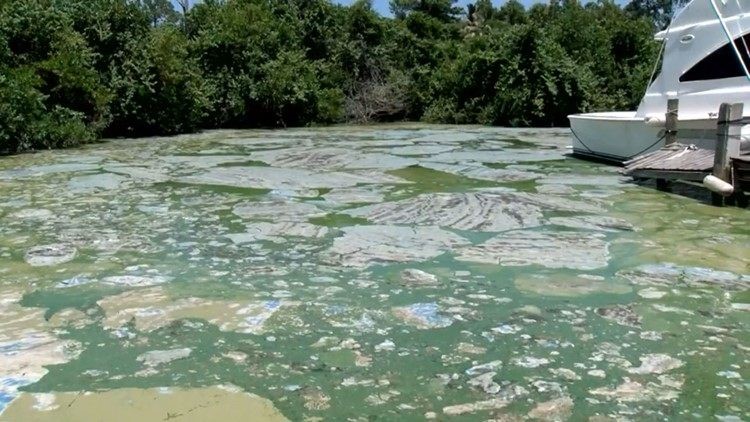We've been telling you about the toxic algae blooms in Lake Okeechobee and neighboring communities all summer.
One of the researchers studying how these blooms keep popping up says septic tanks and nitrogen pollution are a large part of the problem.
Brian Lapointe from Florida Atlantic's Harbor Branch Oceanographic Institute has been studying water quality for decades. He received his Ph.D. from the University of South Florida and is familiar with our waterways and ecosystems to the south.
He said 95 percent of the water and the nutrients feeding the algae blooms are coming from north of the lake -- especially the communities that are part of the Kissimmee basin and chain of lakes as far north as Orlando.
Lapointe told 10News just as Tampa Bay has made efforts to remove nitrogen from wastewater, the communities around the Lake need to do the same.
“Nitrogen was identified as the key limiting nutrient to the algae blooms in Tampa Bay way back in the '70s ... and once people realized that it was nitrogen and a lot of this was coming from inadequately treated human wastewater, once that decision was made that was what kick-started the recovery,” Lapointe said.
He pointed to the numbers. “Septic tank effluent has on average about 65 mg/L of nitrogen, compared to the sewage treatment plants in the Tampa Bay area that have about 1 mg/L in their effluent.”
He also disagreed with the idea of releasing water to the south of Lake Okeechobee. Environmental groups have offered that idea as a way to reduce the number of blooms.
Lapointe, however, believes that will just move the problem, not resolve it.
►Make it easy to keep up-to-date with more stories like this. Download the 10 News app now.
Have a news tip? Email tips@wtsp.com, visit our Facebook page or Twitter feed.



